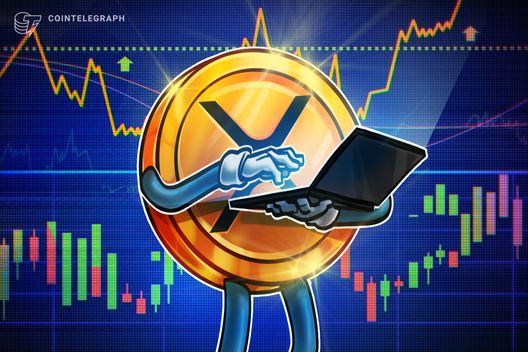
Ripple co-founder and former CEO Chris Larsen has amassed millions in realized profits from XRP since 2018, potentially putting the price recovery at risk.
Larsen, who holds a significant stake in XRP from his early involvement with Ripple, has been a consistent seller of the digital asset, particularly during periods of price surges. On-chain analytics and public tracking platforms frequently highlight large transfers from wallets associated with Larsen, often coinciding with local market peaks. While the exact motivations behind each sale are personal, the cumulative effect of these divestments raises questions among the XRP community about the token's ability to sustain upward momentum.
The Whale Effect: Selling Pressure and Market Sentiment
Large-scale sales by a "whale" like Larsen can have a multifaceted impact on an asset's price. Firstly, a substantial sell-off introduces significant selling pressure into the market. If the volume of tokens being sold outweighs the immediate buying demand, it can lead to a downward price correction or slow down a rally. For an asset like XRP, which has a large circulating supply but has faced headwinds, consistent sales from a major holder can create an uphill battle for price appreciation.
Secondly, these transactions can profoundly influence market sentiment. When a co-founder, particularly one with such a deep understanding of the project, consistently sells off their holdings, it can be interpreted by some investors as a lack of long-term conviction. This perception, whether accurate or not, can trigger FUD (fear, uncertainty, and doubt) among retail investors, leading to further sell-offs as they mimic what they perceive as informed insider moves. Such cascading effects can be particularly damaging to an asset trying to break free from prolonged consolidation.
Beyond the Sales: A Broader Perspective on XRP's Future
However, it's crucial to consider the broader context. While Larsen's sales are noteworthy, they are not the sole determinant of XRP's price trajectory. Larsen, like any individual, has personal financial planning needs, which may include diversification, tax considerations, or philanthropic endeavors. His sales do not necessarily imply a lack of faith in Ripple's underlying technology or the XRP Ledger.
Moreover, the XRP ecosystem is evolving. Ripple continues to pursue partnerships for its On-Demand Liquidity (ODL) solution, utilizing XRP for cross-border payments. The ongoing legal clarity surrounding Ripple's battle with the SEC, while protracted, has provided some positive rulings for XRP, differentiating it from unregistered securities in certain contexts. Broader crypto market trends, institutional adoption, and the overall utility development of the XRP Ledger will likely play a more significant role in its long-term valuation than the individual selling patterns of a co-founder.
Navigating the Volatility
For XRP holders, understanding the dynamics of such large-scale sales is essential. While they introduce a layer of supply-side pressure, they must be weighed against the fundamental developments and macro factors affecting the cryptocurrency market. The question isn't solely whether Larsen's sales "hurt" XRP, but rather if the ecosystem's growth and external demand can absorb these sales and continue to drive value. As with any investment, due diligence and a balanced perspective are paramount in navigating the complex world of crypto.
Keywords: XRP price, Ripple co-founder, Chris Larsen, cashing out, selling pressure, crypto whales, market sentiment, XRP Ledger, On-Demand Liquidity, crypto investment, tokenomics

